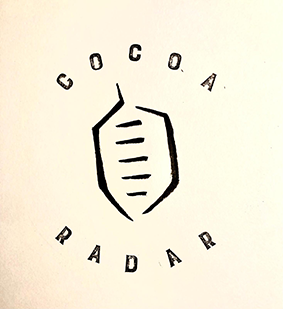Scientists at the United Nations COP 16 talks in Colombia have delivered a wake-up call to global leaders. They claim that biodiversity in many of the world’s critical protected regions is declining more rapidly than in other areas despite an agreement at COP 15 in 2022 to save the environment.
Unfortunately, this means Colombia’s cocoa-growing communities are under threat.
Casa Luker, one of Colombia’s largest and most sustainable chocolate companies, is extending its reach to help protect the country’s Tropical Dry Forest, one of the most endangered forest ecosystems.
Its work is centered on Huila's Tropical Dry Forest region, to the south of the city of Cali, where the 2024 United Nations Biodiversity Conference is being held. This particular forest has come under significant threat, primarily caused by logging, ranching, and illicit mining, accelerating the loss of woodland and jungle and increasing the risk of forest fires and drought caused by climate change.
Luker is working with almost 100 cocoa farmers in the area on crop care practices, waste separation techniques, and how to identify species vital for maintaining the balance of the ecosystem. It also measures carbon capture on farms to encourage more sustainable cocoa production and rewards producers who use good practices and produce high-quality results.
As a Cocoa Forests and Peace initiative member, Luker says it is committed to preventing deforestation in its value chain and protecting these invaluable ecosystems.
In 2021, Luker initiated a programme working with cocoa farmers in Huila and invited them to join a legion of watchers called ‘Guardians of the Tropical Dry Forest.’ As part of the legion, Luker is training these farmers to protect the tropical dry forest via agroforestry systems to ensure cocoa serves as a reforestation crop.
Julia Ocampo, Luker’s VP of Cacao Sourcing and Sustainability, told delegates at COP 16: "We see families as key players within the ecosystem, and therefore, we develop projects together with them, promoting ecosystem care."
'The Chocolate Dream'
Casa Luker approaches biodiversity through its sustainability initiative, The Chocolate Dream. This initiative builds deep connections between cocoa-growing families and their ecosystems, fostering biodiversity, community wellbeing, and sustainable cocoa production.
The family-run company says that most of Luker’s cocoa farmers are small-scale producers who intimately understand their land and ecosystems.
“This empowers them to integrate cocoa with diverse native species through agroforestry systems, helping to regenerate degraded ecosystems like the Tropical Dry Forest and Tropical Forest, and protect local biodiversity.”

Established in 1962, the Granja Luker Experimental and Research Centre has trained more than 32,000 farmers and emphasizes innovation in productivity and sustainability. It is located in Caldas, a traditional agricultural area in Colombia, north of Cali.
Juan Pablo Gil Restrepo, Chief of Agricultural Research at the farm, says the significant challenges affecting Colombia’s cocoa farmers include low crop productivity, disease control, climate change adaptation, and generational inclusion.
Increasing cacao yields
The center focuses on increasing cacao yields, ensuring sustainable income, and protecting the environment. Research topics include agronomical behavior, plant nutrition, pollination, biodiversity cacao, and intercropping systems.
Examples of biodiverse systems include using the cacao fruit with beneficial insects, legumes for nitrogen fixation, and forage for nutrient cycling.
The goal is to give producers in the Dry Tropical Forest and other cocoa-growing regions the knowledge and tools to make informed decisions about their farming practices.
Juan Pablo says the centre is proud of successfully implementing recommended practices and new technologies (such as satellite imagery) to improve cacao cultivation.
The forest of 'a thousand colours'
Colombia’s Tropical Dry Forest is the most endangered ecosystem in Colombia - and is known as ‘the forest of a thousand colours’.
What makes it special is its many different varieties of trees blooming in brilliant shades. When the rainy season comes, the forest quickly turns thousands of shades of green.
Huila is a southern Colombia department spanned by the Andes mountains and the Nevado del Huila volcano. The Magdalena River runs through the middle of the region, and in the north, it is surrounded by the vast Tatacoa Desert, which contributes to its unique ecosystem.
Also called a ‘monsoon forest,’ it's an ecosystem located north and south of the world's tropical rainforests. Its main characteristic is its climate: a long dry season with temperatures between 25c and 30c and relatively heavy rainfalls.
According to WWF, despite occupying only 6% of the global territory, tropical forests are home to around 80% of the world's documented species.
Colombia’s cocoa-growing regions, especially the Tropical Dry Forest, are threatened. As part of its Chocolate Dream, Luker has pledged that by 2027, it will have:
- Protected 5,000 hectares of land in cocoa-growing regions across Colombia
- Increased 1,500 cocoa farmers' income by 20%
- Improved the quality of life for 5,000 cocoa-growing families
“We want to protect biodiversity, promote intercropping, the usage of several crops, and protect water resources,” says Juan Pablo.
Ocampo says that through family-centred initiatives, The Chocolate Dream encourages communities to adopt sustainable practices and safeguard their environment for future generations.

She says that while the primary objective of the Chocolate Dream is to increase the income of cocoa-farming families through productivity improvements and better pricing, environmental goals including protecting water, forests, and biodiversity, with efforts to prevent deforestation and promote sustainable practices are also significant.
“We really want to take care of our ecosystems; the environment is critical because it also means the future for the grandchildren. So they say, ‘If we don't care for the water, we won't have water in the future.’ We have to take care of the forest. We have to take care of the water.”

